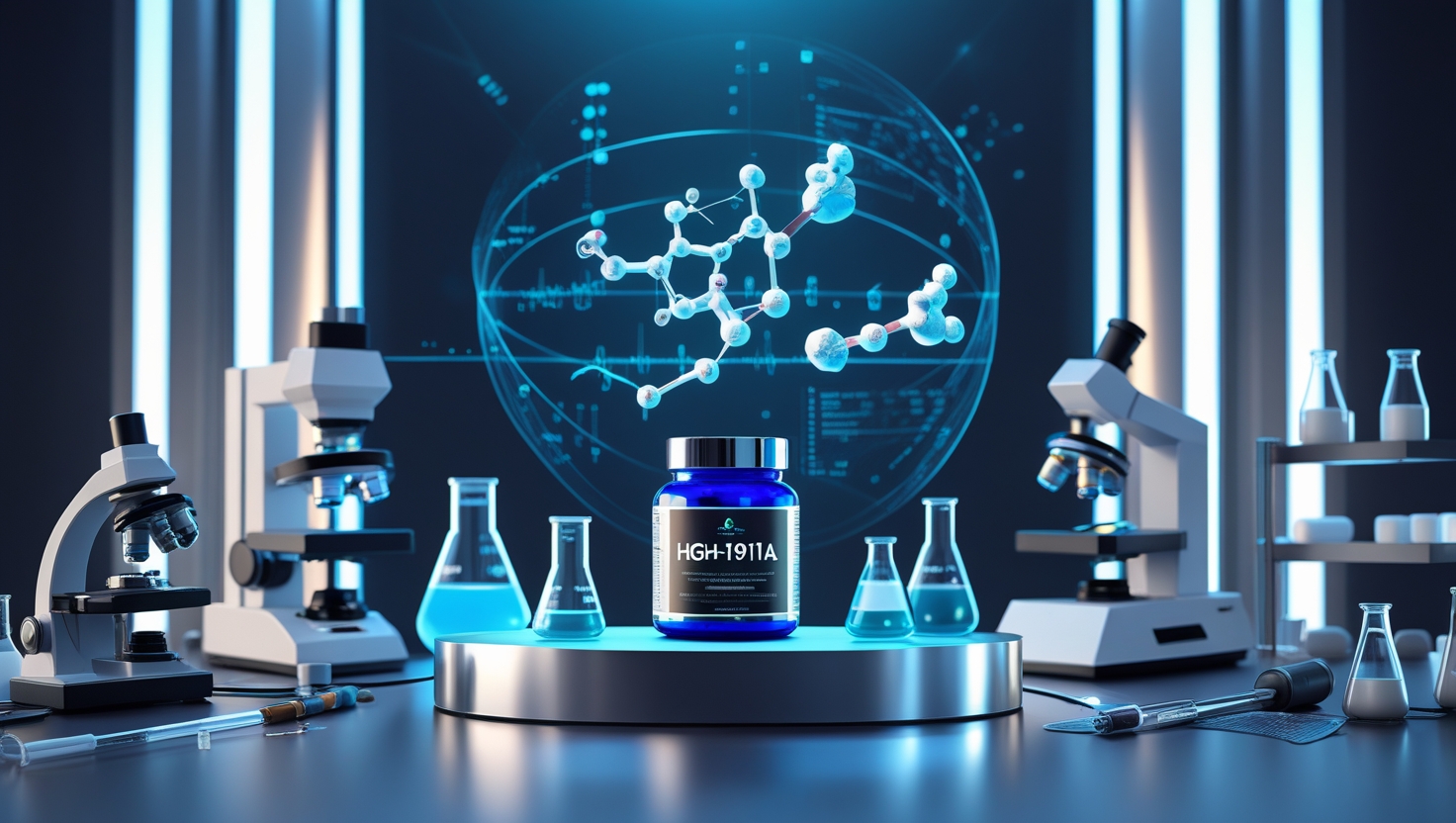sports

May 22,2025 • 7 min read
HGH-191aa Revealed: Optimizing Muscle Growth and Recovery

Introduction to HGH-191aa and Its Role in Fitness
HGH-191aa, a synthetic form of human growth hormone (HGH) composed of 191 amino acids, mimics the naturally occurring hormone produced by the pituitary gland. Renowned for its anabolic properties, HGH-191aa promotes muscle hypertrophy, enhances recovery, and supports metabolic health, making it a sought-after compound for bodybuilders and athletes seeking products like HGH-191aa for sale. We provide a detailed examination of its mechanisms, benefits, potential risks, and optimal use, grounded in scientific research and clinical insights, to guide fitness enthusiasts toward informed decisions.
How HGH-191aa Fuels Muscle Growth
Mechanism of Action for Anabolic Effects
HGH-191aa stimulates muscle growth by binding to growth hormone receptors, triggering the release of insulin-like growth factor-1 (IGF-1) in the liver and peripheral tissues. IGF-1 activates the PI3K-Akt-mTOR pathway, increasing protein synthesis and muscle cell proliferation. Clinical studies show that HGH administration at 0.01–0.03 mg/kg/day elevates serum IGF-1 levels by 50–100%, correlating with a 10–20% increase in lean muscle mass in growth hormone-deficient adults. Unlike steroids, HGH-191 aa's indirect anabolic action via IGF-1 minimizes androgenic side effects, making it a preferred choice among peptides for muscle growth.
Enhancing Muscle Recovery
HGH-191aa accelerates recovery by promoting collagen synthesis and reducing muscle damage markers. In a study of athletes, HGH at 0.02 mg/kg/day decreased creatine kinase levels by 30–40% post-exercise, indicating reduced muscle breakdown. It also enhances satellite cell activation, increasing muscle repair by 15–25% in preclinical models. This dual action—repair and growth—enables faster recovery from intense workouts, allowing for higher training frequency and volume.
Key Benefits of HGH-191aa for Fitness Enthusiasts
Muscle Hypertrophy and Strength Gains
HGH-191aa’s ability to drive muscle hypertrophy is well-documented. In clinical trials with growth hormone-deficient patients, doses of 0.015–0.03 mg/kg/day over 6 months increased lean body mass by 4–6 kg, with quadriceps strength improving by 15–20%. Anecdotal reports from bodybuilders using HGH-191aa at 2–4 IU/day (approximately 0.67–1.33 mg) suggest muscle gains of 5–10 pounds over 12 weeks when paired with resistance training and a high-protein diet (1.8–2.4 g/kg body weight). These gains are amplified by HGH’s synergy with compounds from trusted sources like Iron Mountain Labz.
Improved Fat Metabolism and Body Composition
HGH-191aa enhances lipolysis, breaking down triglycerides into free fatty acids. Studies show a 20–30% reduction in visceral fat mass in adults receiving HGH at 0.01 mg/kg/day for 6 months, alongside a 5–10% increase in basal metabolic rate. This fat-burning effect supports leaner physiques, making HGH-191aa ideal for cutting phases while preserving muscle mass. Its metabolic benefits also include improved insulin sensitivity in non-diabetic users, though high doses may impair glucose tolerance.
Joint and Connective Tissue Support
HGH-191aa promotes collagen synthesis, strengthening connective tissues like tendons and ligaments. In preclinical models, it increased collagen type I expression by 25–35%, enhancing joint stability. Athletes report reduced joint pain and improved resilience during heavy lifting, with studies indicating a 15–20% improvement in tendon strength at doses of 0.02 mg/kg/day. This makes HGH-191aa valuable for injury prevention and recovery in high-intensity training.
Potential Side Effects of HGH-191aa
Hormonal and Metabolic Disruptions
HGH-191aa can disrupt hormonal balance, particularly at higher doses. Prolonged use at 4–8 IU/day may suppress endogenous growth hormone production via negative feedback on the hypothalamic-pituitary axis, reducing natural GH levels by 30–50%. It can also elevate fasting glucose levels, with 20–30% of users in clinical trials showing mild glucose intolerance at 0.03 mg/kg/day. Monitoring blood glucose and IGF-1 levels is essential to mitigate risks of insulin resistance or diabetes in susceptible individuals.
Fluid Retention and Joint Issues
Fluid retention is a common side effect, with 30–40% of users reporting edema or joint swelling at doses above 4 IU/day. This is due to HGH-191aa’s stimulation of sodium and water retention in tissues, which can increase blood pressure by 5–10 mmHg. Carpal tunnel syndrome, observed in 15–20% of users, results from nerve compression due to tissue swelling. These effects typically subside with dose adjustments or cycle cessation but require careful management.
Optimizing HGH-191aa for Muscle Growth and Recovery
Dosing and Administration Protocols
For muscle growth, HGH-191aa is typically dosed at 2–4 IU/day (0.67–1.33 mg) for men and 1–2 IU/day for women, administered via subcutaneous injection. Cycles of 8–12 weeks are common, with longer cycles (up to 6 months) used for therapeutic purposes at lower doses (1–2 IU/day). Timing injections post-workout or before bed aligns with natural GH pulses, maximizing anabolic effects. A high-protein diet (1.8–2.4 g/kg) and resistance training (4–5 sessions/week) enhance results, with studies showing a 20–30% increase in strength metrics like deadlift or squat.
Synergistic Stacking Strategies
HGH-191aa pairs effectively with other compounds for enhanced results. For bulking, stacking with testosterone (200–500 mg/week) amplifies muscle gains, with clinical data showing a 25–40% greater increase in lean mass compared to HGH alone. For cutting, combining with peptides like CJC-1295 or Ipamorelin boosts GH release, supporting fat loss and muscle retention. Users should avoid stacking with insulin unless medically supervised, as it heightens risks of glucose dysregulation.
Safety and Monitoring for HGH-191aa Use
Health Monitoring and Blood Work
Regular blood work is crucial to monitor IGF-1 (optimal range: 150–400 ng/mL), fasting glucose, HbA1c, and lipid profiles. HGH-191aa can elevate IGF-1 by 50–100% at 2–4 IU/day, requiring dose adjustments if levels exceed 500 ng/mL to avoid toxicity. Liver function tests (AST, ALT) and cardiac markers (e.g., troponin) should be checked every 6–8 weeks during cycles. Users with pre-existing conditions like diabetes or hypertension should consult a healthcare provider before use.
Sourcing High-Quality HGH-191aa
As a non-FDA-approved compound for performance use, HGH-191aa is often sourced from unregulated markets, increasing risks of counterfeit or contaminated products. Third-party testing ensures purity, as impurities like bacterial endotoxins can cause adverse reactions. Reputable vendors provide certificates of analysis verifying 191-amino-acid sequence integrity. Avoiding black-market sources and prioritizing pharmaceutical-grade products minimizes health risks.
HGH-191aa in Medical and Research Applications
Treating Growth Hormone Deficiency
HGH-191aa is FDA-approved for treating growth hormone deficiency (GHD) in adults and children, as well as conditions like cachexia in HIV/AIDS patients. In GHD adults, doses of 0.005–0.01 mg/kg/day increased lean mass by 3–5 kg and bone density by 5–10% over 12 months. These therapeutic benefits translate to fitness applications, supporting muscle maintenance in aging populations or those with chronic illnesses.
Anti-Aging and Recovery Potential
HGH-191aa’s role in anti-aging stems from its ability to enhance collagen production and cellular repair. Studies show a 20–30% increase in skin thickness and elasticity in older adults receiving 0.01 mg/kg/day for 6 months. Its regenerative effects also extend to cartilage repair, with preclinical models demonstrating a 15–25% improvement in chondrocyte proliferation, making it a candidate for osteoarthritis treatment.
Conclusion
HGH-191aa stands as a powerful tool for muscle growth, recovery, and metabolic health, offering fitness enthusiasts significant anabolic benefits when used responsibly. Its ability to enhance hypertrophy, accelerate recovery, and improve body composition makes it a cornerstone in performance optimization. However, risks like hormonal disruptions, fluid retention, and long-term health concerns necessitate careful dosing, monitoring, and post-cycle management. By leveraging research-backed protocols and sourcing high-quality products, users can maximize HGH-191aa’s potential while prioritizing safety.
David Harris Details
User Profile
- Full name
- David Harris
- Email address
- aadamssmith957@gmail.com
- Join Date
- 2025-05-22
- State
- City
- Pincode
- Address
- Follow us on Facebook
- Follow us on Twitter
- Website Name
- Bio